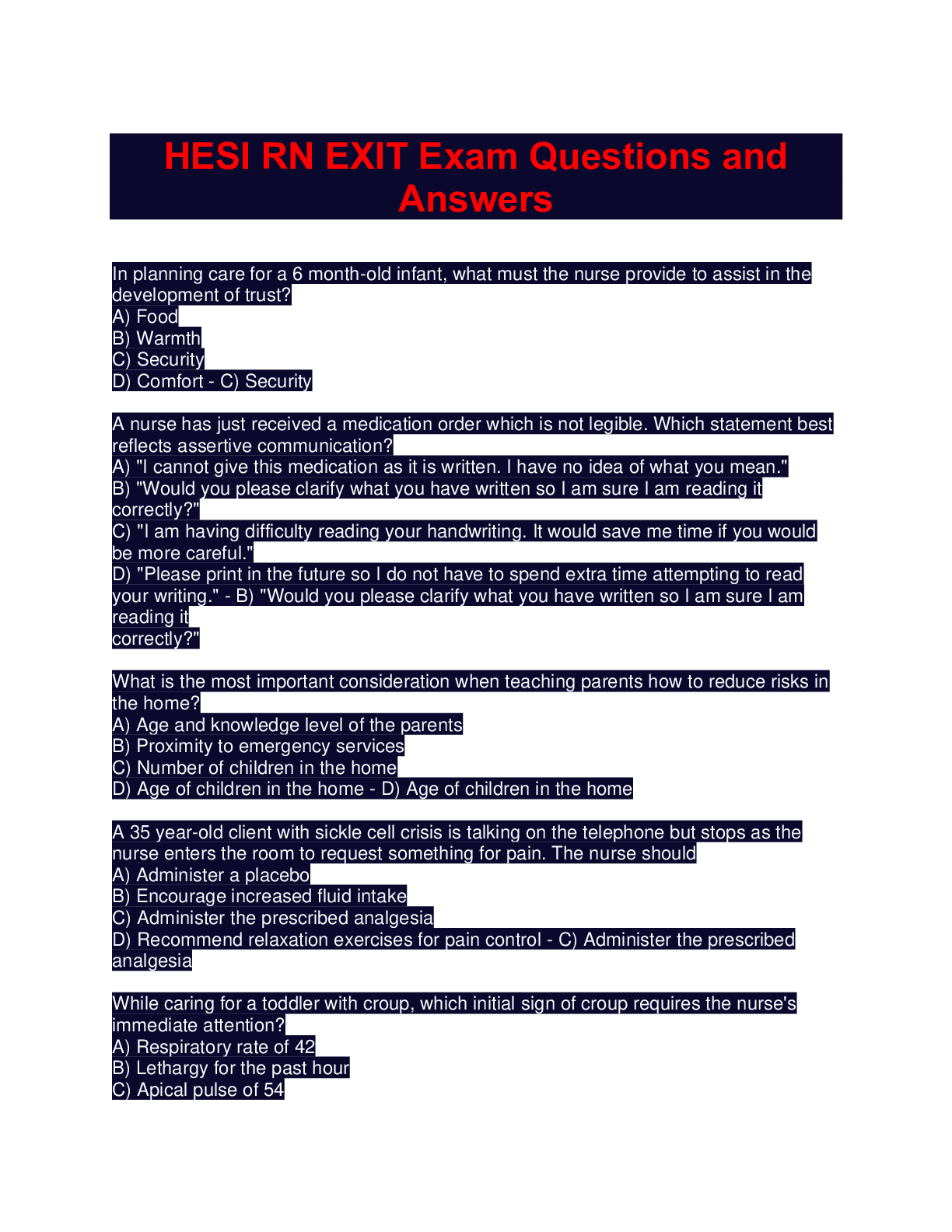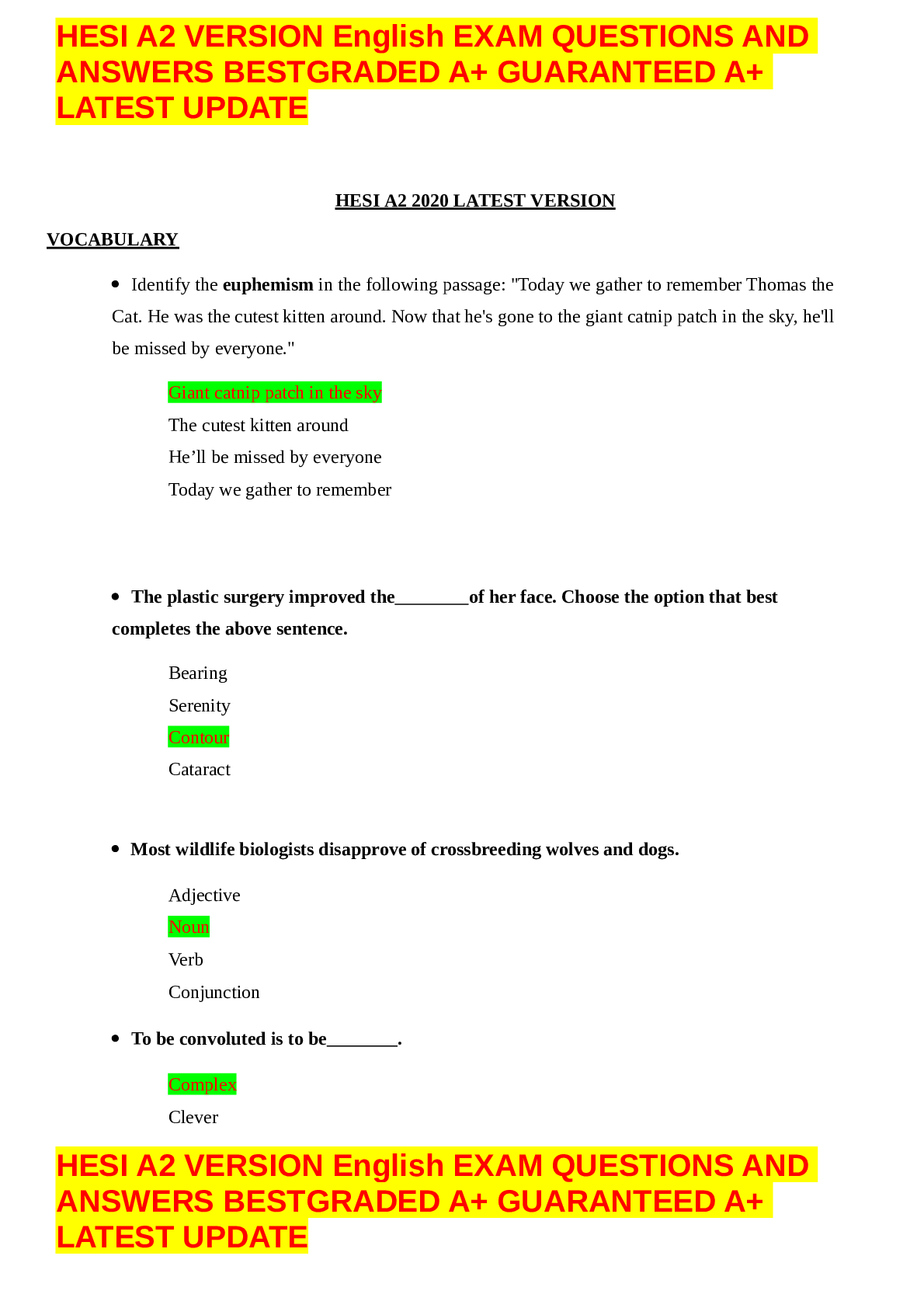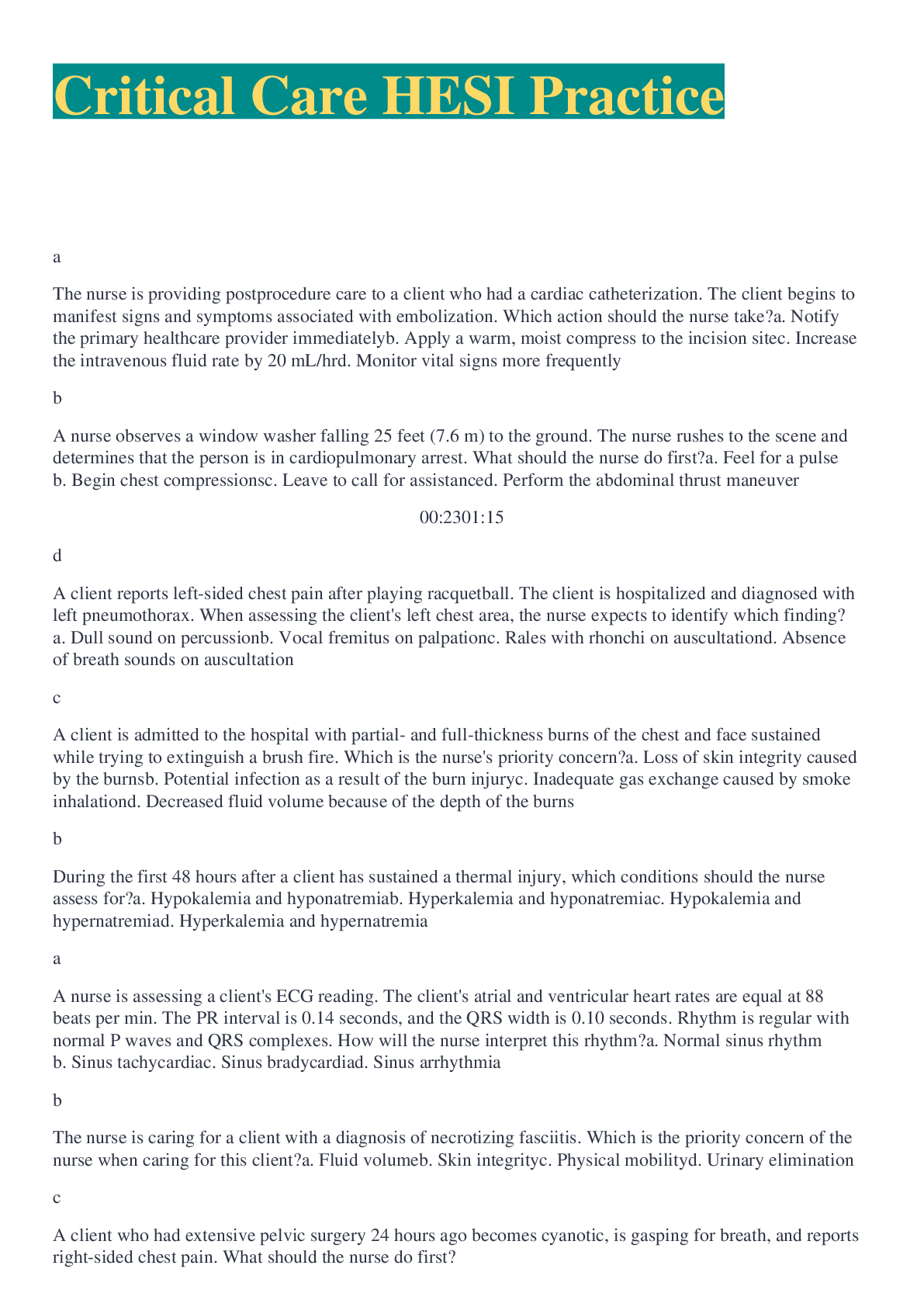HESI COMMUNITY HEALTH PROCTORED EXAM UPDATED 2021/2022 GRADED A+
Document Content and Description Below
1. The nurse is teaching a patient about contact lens care. Which instructions will the nurse include in the teaching session? a. Use tap water to clean soft lenses. b. Wash and rinse lens storage ... case daily. c. Reuse storage solution for up to a week. d. Keep the lenses is a cool dry place when not being used. ANS: B Thoroughly wash and rinse lens storage case on a daily basis. Clean periodically with soap or liquid detergent, rinse thoroughly with warm water, and air-dry. Do not use tap water to clean soft lenses. Lenses should be kept moist or wet when not worn. Use fresh solution daily when storing and disinfecting lenses. 2. The patient reports to the nurse about a perceived decrease in hearing. When the nurse examines the patient’s ear, a large amount of cerumen buildup at the entrance to the ear canal is observed. Which action will the nurse take next? a. Teach the patient how to use cotton-tipped applicators. b. Tell the patient to use a bobby pin to extract earwax. c. Apply gentle, downward retraction of the ear canal. d. Instill hot water into the ear canal to melt the wax. ANS: C When cerumen is visible, gentle, downward retraction at the entrance to the ear canal causes the wax to loosen and slip out. Instruct the patient never to use sharp objects such as bobby pins or paper clips to remove earwax. Use of such objects can traumatize the ear canal and ruptures the tympanic membrane. Avoid the use of cotton- tipped applicators as well because they cause earwax to become impacted within the canal. Instilling cold or hot water causes nausea or vomiting. 3. The patient is being fitted with a hearing aid. In teaching the patient how to care for the hearing aid, which instructions will the nurse provide? a. Change the battery every day or as needed. b. Adjust the volume for a talking distance of 1 yard. c. Wear the hearing aid 24 hours per day except when sleeping. 180 d. Avoid the use of hairspray, but aerosol perfumes are allowed. ANS: B Adjust volume to a comfortable level for talking at a distance of 1 yard. Initially, wear a hearing aid for 15 to 20 minutes; then gradually increase wear time to 10 to 12 hours per day. Batteries last 1 week with daily wearing of 10 to 12 hours. Avoid the use of hairspray and perfume while wearing hearing aids. Residue from the spray can cause the aid to become oily and greasy. 4. The patient is reporting an inability to clear nasal passages. Which action will the nurse take? a. Use gentle suction to prevent tissue damage. b. Instruct patient to blow nose forcefully to clear the passage. c. Place a dry washcloth under the nose to absorb secretions. d. Insert a cotton-tipped applicator to the back of the nose. ANS: A Excessive nasal secretions can be removed using gentle suctioning. However, patients usually remove secretions from the nose by gentle blowing into a soft tissue. Caution the patient against harsh blowing that creates pressure capable of injuring the eardrum, the nasal mucosa, and even sensitive eye structures. If the patient is unable to remove nasal secretions, assist by using a wet washcloth or a cotton-tipped applicator moistened in water or saline. Never insert the applicator beyond the length of the cotton tip. 5. A patient uses an in-the-canal hearing aid. Which assessment is a priority? a. Eyeglass usage b. Cerumen buildup c. Type of physical exercise d. Excessive moisture problems ANS: B With this type of model (in-the-canal), cerumen tends to plug this model more than others. There are three popular types of hearing aids. An in-the-canal (ITC) aid is the newest, smallest, and least visible and fits entirely in the ear canal. It has 180 cosmetic appeal, is easy to manipulate and place in the ear, and does not interfere with wearing eyeglasses or using the telephone, and the patient can wear it during most physical exercise. An in-the-ear aid (ITE, or intra-aural) is more noticeable than the ITC aid and is not for people with moisture or skin problems in the ear canal. The larger size of this type of aid (behind-the-ear, BTE, or post- aural) can make use of eyeglasses and phones difficult; it is more difficult to keep in place during physical exercise. MULTIPLE RESPONSE 1. The nurse is caring for a patient with cognitive impairments. Which actions will the nurse take during AM care? (Select all that apply.) a. Administer ordered analgesic 1 hour before bath time. [Show More]
Last updated: 2 years ago
Preview 1 out of 13 pages

Buy this document to get the full access instantly
Instant Download Access after purchase
Buy NowInstant download
We Accept:

Reviews( 0 )
$16.00
Can't find what you want? Try our AI powered Search
Document information
Connected school, study & course
About the document
Uploaded On
Oct 06, 2022
Number of pages
13
Written in
Additional information
This document has been written for:
Uploaded
Oct 06, 2022
Downloads
0
Views
102





.png)





 (1).png)












